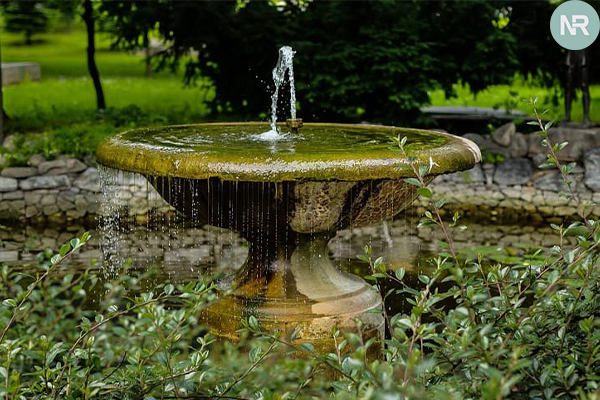Discover simple steps on how to clean algae from your outdoor fountain effectively today.
HOME >> Product Guide >> Water Fountain

Outdoor fountains are the most important to enhance the beauty of the home’s exterior. The fountains are large, and the sound of the water can hear from afar. Because of the large outdoor fountain basin, the fountain uses mineral water. Using mineral water, the fountain gets dirty very quickly. Also, being outdoors causes water loss due to leaves and bird feathers. As a result, unique materials, including algae, can accumulate in the springs. If these impurities are not cleaned immediately, there is a possibility of damage to the fountain. Here’s an easy way to clean algae from an outdoor fountain.
Algae are a type of aquatic plant composed of photosynthetic and nucleus-bearing organisms that lack the multicellular reproduction capabilities of stems, leaves, and plants. These algae are formed by the reaction of sunlight with mineral water.
Outdoor fountains need large amounts of water, so distilled water is unused. As a result, mineral water has to use in the fountain. Because natural water contains minerals, tiny bacteria combine with sunlight to form algae in spring water. Also, outdoors wearing leaves and bird feathers on the water causes algae to grow very quickly in that water.
As algae build-up, the fountain becomes slippery in the basin. After a few days, the algae become blue, and the fountain water turns blue. These algae build up inside the fountain if it is not cleaned properly. As a result, the beauty of the fountain is lost, and at one time, the water flow rate of the motor decreases. So to enhance the beauty of the outdoor fountain, it is necessary to clean the fountain algae.
To clean fountain algae, mix clean water with chlorine bleach. Keep the water and chlorine bleach ratio to 9:1. If the basin size is large, take a little more of the mixture. If the amount of algae is less, you can use baking soda.
Properly dispose of all old water before cleaning outdoor fountains. After draining the water, throw away the dirt in the fountain and take out the motor inside the fountain. When removing the motor, remove the tube that comes with the motor.
After removing the motor and its accessories, it is important to clean the inside. Run the bleached water through the pump to clean. The algae grow again within a few days if the pump is not cleaned. Also, run the water through a pressure attachment hose to clean the tube.
After cleaning the pump, sprinkle the bleached water into the fountain basins. Then leave the basin with bleach-mixed water in the designated area for 30 minutes because the algae mix with the bleached water and separate from the basin. When the algae seem to have separated lightly, scrub all parts of the basin thoroughly with a scrub brush. Scrub the outside of the fountain with a scrub brush with water to enhance the beauty of the fountain.
After cleaning with a brush, rinse the basin with clean water when the algae appear to be removed from the basin. After that, you will see small areas of algae in the basin, then scrub it well with a scrub brush. Cleaning, clean the entire fountain thoroughly with clean water.
After cleaning the fountain, dry it in the sun, as this will kill the algae in the fountain. If you start using it after cleaning the fountain, the algae will build up again after a few days. So dry the fountain before use.
After the outdoor fountain is thoroughly dry, reassemble the fountain. Set the motor in the basin with enough water to keep the motor submerged. When everything seems well set, turn on the fountain and enjoy the sound of flowing water.
Regular maintenance is the best way to keep an outdoor fountain free of algae. Apart from this, there are many more ways which are given below!